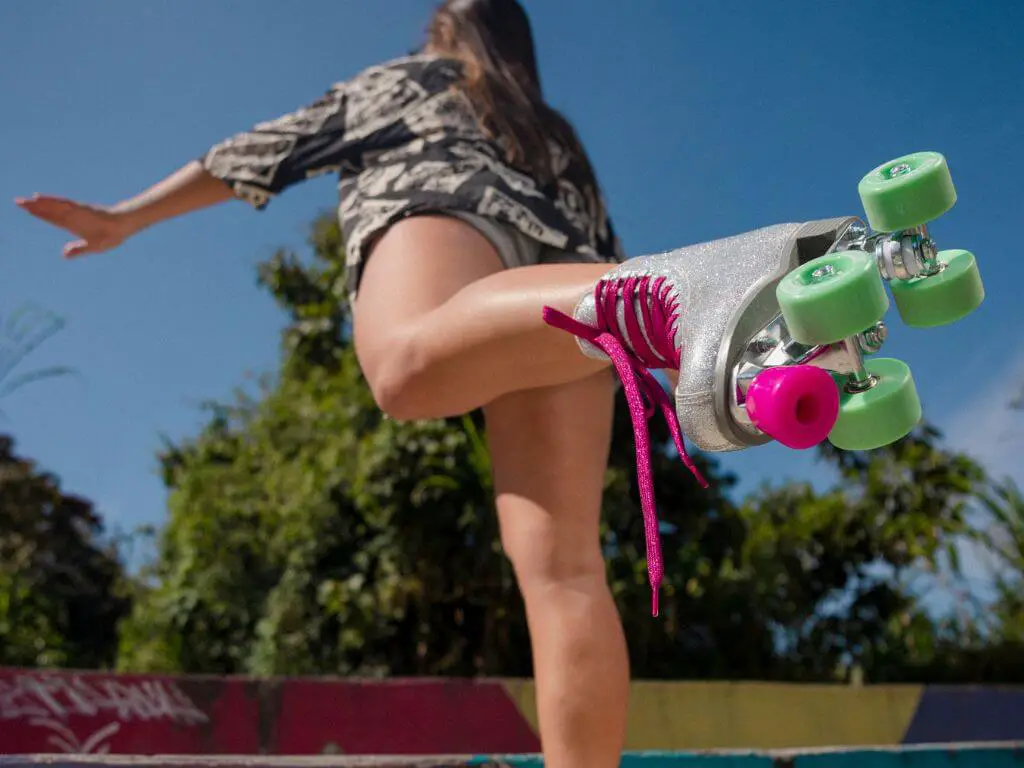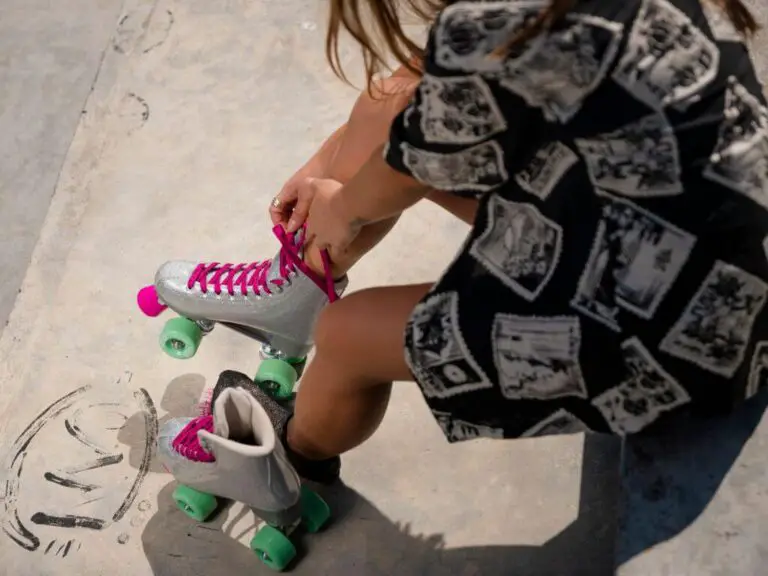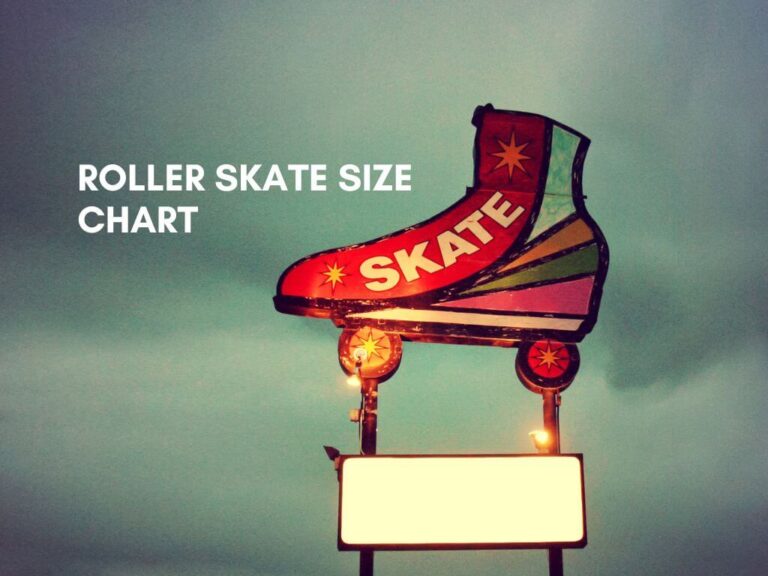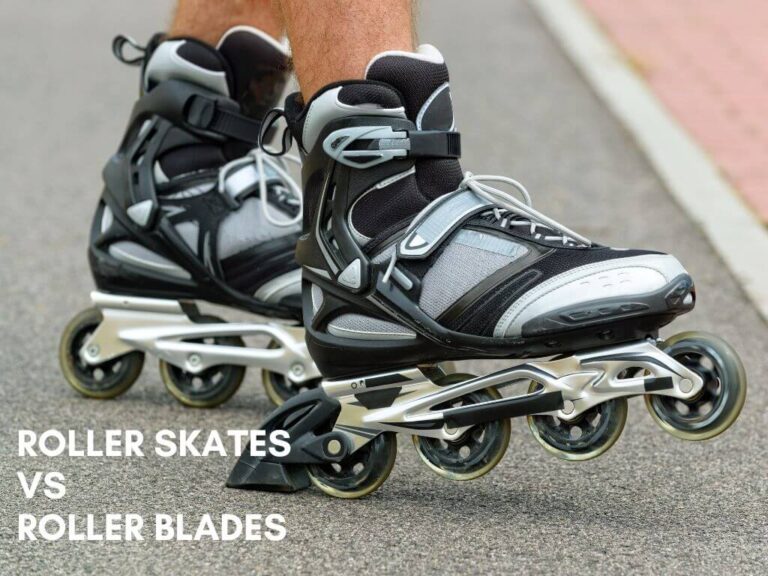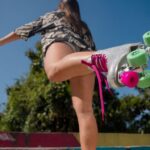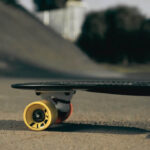Roller skating is a thrilling activity that combines fitness, fun, and freedom. But if you’ve ever watched someone effortlessly glide backwards on roller skates, you know there’s something truly mesmerizing about it. Learning how to roller skate backwards is not only a impressive skill to add to your repertoire, but it also enhances your balance, coordination, and overall skating ability. Whether you’re a beginner looking to expand your skills or an intermediate skater aiming to refine your technique, this guide will walk you through everything you need to know to master the art of skating in reverse.
From understanding the basics of posture and weight distribution to practicing essential drills, we’ll break down the process into simple, actionable steps. By the end of this article, you’ll be ready to hit the rink or pavement with confidence, turning heads as you gracefully skate backwards like a pro. Let’s roll!
Why Learn to Roller Skate Backwards?
Here are a few reasons why you should consider learning this cool skill:
| Benefit | How It Helps |
|---|---|
| Improves Balance | Helps you strengthen core muscles and coordination. |
| Boosts Confidence | Mastering a new skill on skates makes you feel empowered. |
| Increases Agility | Makes your overall skating smoother and more flexible. |
| Provides Fun Challenge | Gives you a new goal to work towards and keeps skating exciting! |
It doesn’t matter if you’ve been skating for a while or are just starting. With patience and practice, anyone can learn to skate backward. So let’s dive in, break it down step by step, and get you rolling backward like a pro!
Preparing for Backward Skating
Before you start skating backward, it’s important to make sure you’re ready. You want to be comfortable and safe, so let’s walk through the steps you’ll need to set yourself up for success.
Gear Up: What You’ll Need
Having the right gear is essential to stay safe and feel confident while you’re practicing. Here’s a checklist of must-haves:
| Essential Gear | Why It’s Important |
|---|---|
| Proper Skates | Make sure your roller skates are well-fitted and comfortable. This will help with stability. |
| Knee Pads | Protect your knees in case of a fall. |
| Wrist Guards | To safeguard your wrists during a tumble. |
| Helmet | Always wear a helmet to protect your head from any falls. |
| Elbow Pads | Optional but recommended to protect your elbows. |
Find Your Space
Next, you’ll want to practice in a safe environment. Look for a smooth, open area with minimal obstacles – like an empty parking lot, a gym floor, or a smooth sidewalk. Avoid places with cracks or uneven surfaces, as they could make balancing more difficult.
Warm-Up: Get Ready to Move
Before diving into backward skating, it’s important to do some warm-up exercises. This helps activate your muscles and improves your balance, making the process smoother. Here are a few simple warm-up exercises:
- Rocking Motions: Stand still and gently rock your weight back and forth. This helps you get used to shifting your body weight, which is key to controlling your movements while skating backward.
- Shifting Weight: Practice shifting your weight from one foot to the other while standing. This simulates the motion of gliding backward, allowing you to build confidence before you actually start moving.
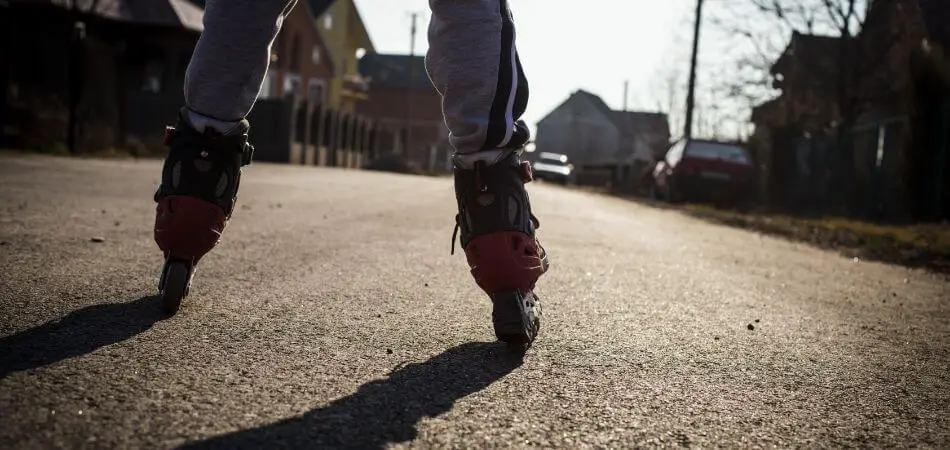
Mastering the Basics of Backward Movement
Now that you’re all set up and ready to roll, it’s time to start learning how to actually move backward. It might seem tricky at first, but with some practice and the right techniques, you’ll be gliding smoothly in no time.
Start With the Right Stance
Before you take your first backward stride, it’s important to find your balance. Here’s how to set yourself up:
- Knees Slightly Bent: Keep your knees bent, not locked. This helps you absorb any bumps or shifts in the surface and maintains better control.
- Weight Centered: Keep your weight centered over your skates. Avoid leaning too far forward or backward. Your body should be in a relaxed, upright position.
- Arms Out for Balance: Spread your arms slightly out to your sides for extra balance. This helps prevent you from tipping over as you get comfortable with the movement.
Scissor Technique: Your Starting Point
One of the best ways to begin backward skating is by using the scissor technique. It’s simple and gives you more control as you move. Here’s how to do it:
- Position Your Feet: Start by positioning your feet in a V shape, with your toes pointing slightly out and heels closer together.
- Push Off with One Foot: Push gently with one foot while keeping the other foot stationary. This motion should feel like a gentle glide.
- Alternate Feet: After pushing off with one foot, alternate by shifting the weight to the other foot. This allows you to continue rolling backward without losing momentum.
Start Slowly and Build Up
At first, don’t worry about speed. Take small, controlled steps to ensure you stay balanced. You want to gradually build up to smoother, faster movements. Here are a few tips:
- Pace Yourself: Start with short, slow strides. As you get more comfortable, you can begin to take longer strides, but always maintain control.
- Look Over Your Shoulder: As you roll backward, keep your head up and occasionally look over your shoulder to make sure you know where you’re going. This helps you avoid obstacles and stay safe.
With the scissor technique in your toolkit, you’re well on your way to mastering backward skating! The next step will be learning how to maneuver and turn while skating backward, so get ready for some fun challenges.
Turning and Maneuvering Backward
Now that you’re comfortable with basic backward skating, it’s time to take things up a notch by learning how to make smooth turns and maneuver while rolling backward. This is where you’ll really start to feel like a pro!
Making Smooth Turns While Skating Backward
Turning while skating backward can feel tricky at first, but with a few simple techniques, you’ll be turning with ease in no time. Here’s how to make smooth turns:
- Lean Into the Turn: To initiate a turn, lean gently in the direction you want to go. If you want to turn left, lean slightly to the left. Your body’s position will naturally guide your skates in the same direction.
- Use Your Shoulders: Your shoulders play an important role in turning. As you lean into the turn, turn your shoulders in the direction of the turn. This will help your skates follow.
- Small, Controlled Strides: Keep your steps small and controlled as you turn. This helps maintain balance and avoids overbalancing or losing speed.
Using Crossovers for More Advanced Backward Skating
As you get more comfortable turning, you can start using crossovers to make your turns smoother and faster. Crossovers are a more advanced technique, but they’re very effective for tight, quick turns.
- Position Your Feet: Start with your feet in a V position.
- Cross One Foot Over: As you glide backward, cross one foot over the other in a smooth, controlled motion. The foot you cross over should be the one that is in the rear, so it crosses in front of the lead foot.
- Push Off with the Crossed Foot: After the crossover, push off with the foot that is now in the rear to keep your momentum going.
- Repeat: Alternate the crossover with each stride to turn quickly and maintain speed.
Practice in a Safe Space
Turning while skating backward requires a bit more practice, so be sure to choose a safe environment. Practice in an open space where you can make turns without worrying about obstacles. You can even set up a few cones or markers to practice turning around them.
Turning and maneuvering backward is a fantastic skill that will allow you to look smooth and controlled while skating.
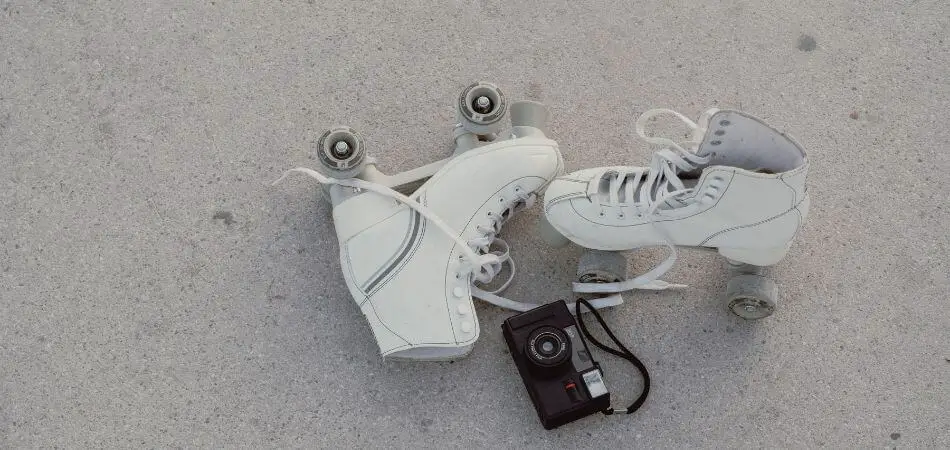
Stopping Safely While Skating Backward
When you’re learning how to roller skate backwards, knowing how to stop is just as important as knowing how to move. Stopping correctly ensures that you stay in control and prevents accidents. Let’s go over a few effective stopping techniques that will help you stop safely and smoothly while rolling backward.
1. T-Stop: The Most Common Stopping Method
The T-stop is one of the most reliable and easiest ways to stop while skating backward. Here’s how to do it:
- Position Your Feet: As you skate backward, keep your feet slightly apart.
- Drag One Foot: Gradually drag one foot behind you, positioning it at a T-shape relative to your lead foot. The dragged foot should be angled slightly outward.
- Apply Pressure: Apply gradual pressure on the dragged foot to create friction, which will slow you down and eventually stop your movement.
- Maintain Balance: Keep your weight centered and knees slightly bent as you stop, and be sure to stay upright and in control.
2. Plow Stop: Slow and Steady
The plow stop is another useful stopping technique, especially when you want to come to a slower, more controlled stop.
- Start by Positioning Feet in a V: While skating backward, angle your feet in a V-shape, toes pointed outward and heels close together.
- Push Outward: To stop, gently push the inner edges of both feet outward, like you’re plowing snow. This will create friction with the ground and gradually bring you to a stop.
- Control the Pressure: The more you push outward, the faster you will slow down. Apply enough pressure to stop safely but avoid overdoing it, which could throw you off balance.
3. Dragging One Foot for a Gradual Stop
If you want a gentler stop, you can drag one foot to slow yourself down while keeping both feet on the ground.
- Lift One Foot Slightly: While skating backward, lift one foot slightly off the ground, then drag it behind you at a slight angle.
- Use the Foot for Friction: As the foot drags, the friction will slow you down gradually, allowing you to stop without suddenly losing balance.
Tips for Stopping Safely
- Start Slow: Practice stopping at a slower speed before trying it at full speed to get comfortable with the technique.
- Stay Relaxed: Avoid stiffening up your body, as this could throw you off balance. Keep your knees bent and stay loose.
- Practice in a Controlled Environment: Start practicing your stops in an area with plenty of room and minimal obstacles to avoid distractions or accidents.
Knowing how to stop safely will give you the confidence to push your skills even further. Now that you can move and stop with control, let’s take a look at some common mistakes people make while skating backward – and how to fix them!
Common Mistakes and How to Fix Them
As you practice roller skating backward, you might encounter a few challenges. Don’t worry – it’s completely normal! Identifying and correcting common mistakes will help you improve faster and feel more confident on your skates. Here are some of the most frequent mistakes people make while skating backward and how to avoid or fix them:
1. Looking Down Instead of Ahead
One of the biggest mistakes beginners make is looking down at their feet instead of ahead. This can throw off your balance and make it harder to steer or stop.
How to Fix It:
- Keep your head up and eyes focused ahead of you. Look where you’re going, not at your feet.
- To help with this, practice skating backward while focusing on a distant point in front of you. It’ll help you stay aligned and balanced.
2. Stiff Posture and Tension
A stiff, tense posture can make skating backward much more difficult. If you’re too rigid, it’s harder to shift your weight smoothly or react to changes in the ground beneath you.
How to Fix It:
- Keep your body relaxed and your knees slightly bent. This helps absorb any shifts in balance and gives you more flexibility in your movements.
- Remember to keep your arms slightly out for balance, but don’t lock them into place. Stay fluid in your movement.
3. Pushing Too Hard and Losing Control
Sometimes, beginners tend to push off too hard, which can cause them to lose control and fall.
How to Fix It:
- Start with small, gentle pushes. Focus on controlling your movement rather than trying to go too fast too soon.
- If you find yourself going too fast, practice using the T-stop or plow stop to slow down gradually and get more comfortable with controlling your speed.
4. Not Using the Right Foot Positioning
Improper foot positioning can make it harder to glide smoothly and lead to instability.
How to Fix It:
- Make sure your feet are positioned in a V-shape when using the scissor technique. This helps with balance and control.
- For crossovers, ensure you’re crossing your feet properly (rear foot crossing in front of the lead foot) to maintain a smooth, continuous motion.
5. Fear of Falling and Not Practicing Enough
It’s natural to be a little nervous when trying something new, but fear can prevent you from progressing. If you’re overly cautious, it can slow down your learning and keep you from pushing yourself to improve.
How to Fix It:
- Practice Regularly: Consistent practice is the best way to build confidence. The more you practice, the more you’ll get used to the feeling of skating backward.
- Start Slow: Break things down into smaller steps and practice each movement slowly. As your confidence builds, you’ll be able to go faster and make smoother turns.
- Trust Yourself: Remember, everyone falls sometimes. Don’t let fear hold you back – just get back up and keep going!
Identifying and fixing these common mistakes will help you improve faster and enjoy your backward skating more. Don’t get discouraged if you make mistakes along the way – it’s all part of the learning process!
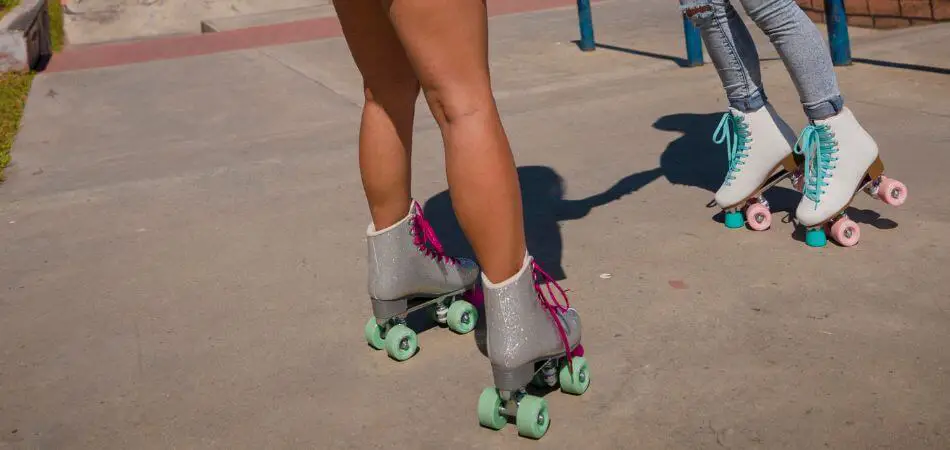
Drills and Practice Routines
Consistency is key to improving your backward skating skills. The more you practice, the more natural it will feel! Here are some simple drills and practice routines to help you refine your technique and build your confidence.
1. Basic Backward Skating Drill
Start with the basics, even as you become more comfortable. The more you repeat foundational drills, the more your balance and control will improve.
How to Do It:
- Find a smooth, open space with minimal distractions.
- Start by skating backward using the scissor technique, focusing on small, controlled steps.
- Gradually increase the length of your strides, but always prioritize control over speed.
- Keep practicing until you can move backward in a straight line without any hesitation.
2. Backward Slalom Drill
This drill helps improve your ability to maneuver and change direction while skating backward. It’s also great for building agility.
How to Do It:
- Set up a series of cones (or any markers) in a straight line, spaced about 3-5 feet apart.
- Skate backward in a zigzag pattern, weaving in and out of the cones while maintaining a smooth, controlled motion.
- Start slowly and focus on your form. As you get more confident, try to increase your speed and precision.
3. Crossovers Backward Drill
Crossovers are a great way to make tight turns while skating backward. This drill will help you get comfortable with using crossovers to turn smoothly.
How to Do It:
- Skate backward in a large open space.
- Start by doing a crossover move (right foot crossing over left) to make a leftward turn.
- Once you’ve completed the turn, repeat the crossover on the opposite side (left foot crossing over right) to make a rightward turn.
- Focus on smooth, fluid motions as you cross your feet over one another. Try to keep your balance and control throughout.
4. Stopping Drills
Being able to stop safely is just as important as learning to move backward. Practice your stopping techniques in a controlled environment to get comfortable with different stopping methods.
How to Do It:
- Skate backward at a slow pace, and when you’re ready, practice using the T-stop and plow stop to come to a complete stop.
- Alternate between the two stopping methods and focus on controlling your speed.
- Practice in a space where you can stop without hitting any obstacles. The more you practice stopping, the more confident you’ll feel when you’re out skating in public.
5. Backward Skating with a Partner
Practicing with a partner is a fun way to build confidence and improve your skills. A partner can offer guidance, encouragement, and help you stay motivated.
How to Do It:
- Skate backward alongside your partner, either side-by-side or taking turns in front.
- Practice simple backward skating drills together, like weaving through cones or doing slalom drills.
- You can also challenge each other to see who can skate backward the longest or with the smoothest motion!
6. Set Realistic Goals
To stay motivated, it’s a great idea to set small, achievable goals for your backward skating progress.
Examples of Goals:
- Skate backward for 30 seconds without losing control.
- Successfully make 3 crossovers in a row.
- Perform a smooth stop without wobbling.
Track your progress and celebrate when you hit these milestones. Setting goals will keep you motivated and give you something to look forward to during practice!
Incorporating these drills into your regular practice routine will help you see improvements in your backward skating skills. The more you practice, the more confident and skilled you’ll become.
Conclusion: Keep Practicing and Have Fun!
Congratulations! You’ve now learned the essential steps to roller skate backwards like a pro. From mastering balance and posture to perfecting smooth turns and stopping techniques, you’re well on your way to skating with confidence.
Key Takeaways:
✔ Balance is everything – Keep your knees slightly bent and your weight centered.
✔ Start slow – Focus on small, controlled movements before increasing speed.
✔ Practice stopping techniques – The T-stop and plow stop are your best friends.
✔ Use drills to improve – Repetition builds muscle memory and confidence.
✔ Don’t fear mistakes – Learning takes time, and every fall is a step forward.
FAQ’s
How to go backwards in roller skating?
To skate backward, start by shifting your weight slightly on your heels, make small “S” or V-shaped motions with your feet, and keep your knees bent for balance. Practice slowly and look over your shoulder to stay aware!
How do you learn to skate backwards?
To skate backward, start by shifting your weight slightly on your heels, making small “S” movements with your feet. Practice balance and control, and take it slow!
Is roller skating backwards hard?
Skating backward can be tricky at first, but with practice and balance, it gets much easier! Start slow, bend your knees, and keep looking over your shoulder

